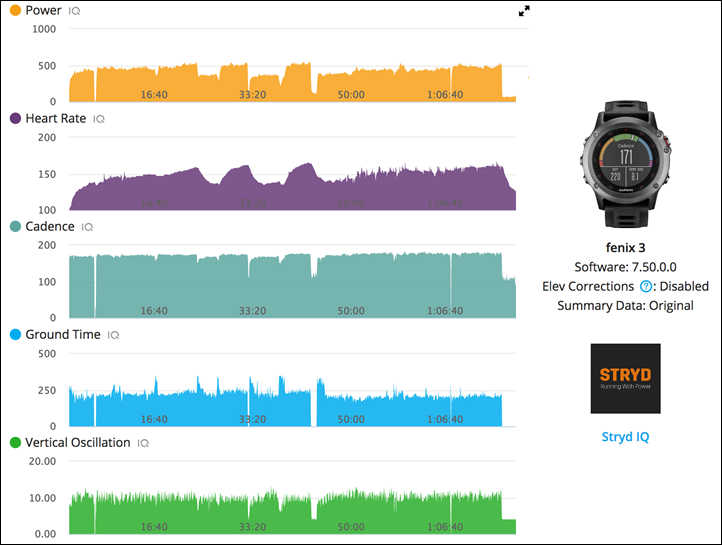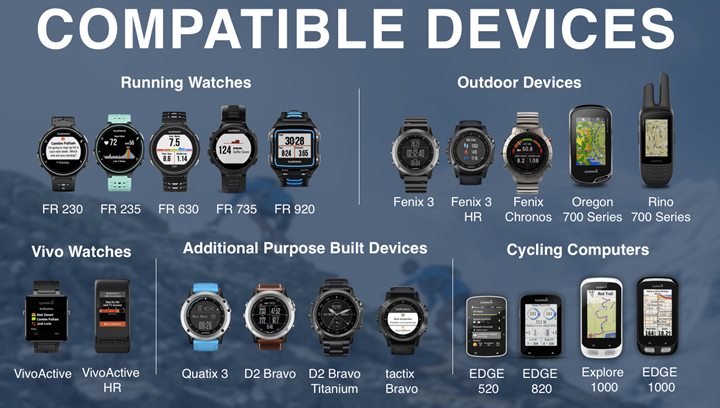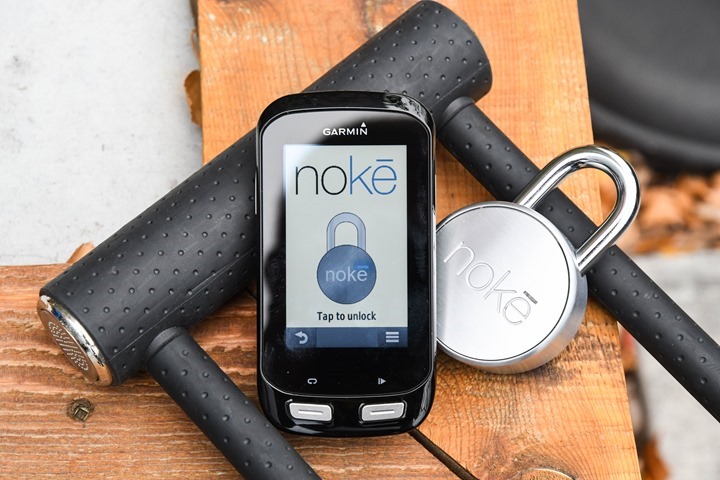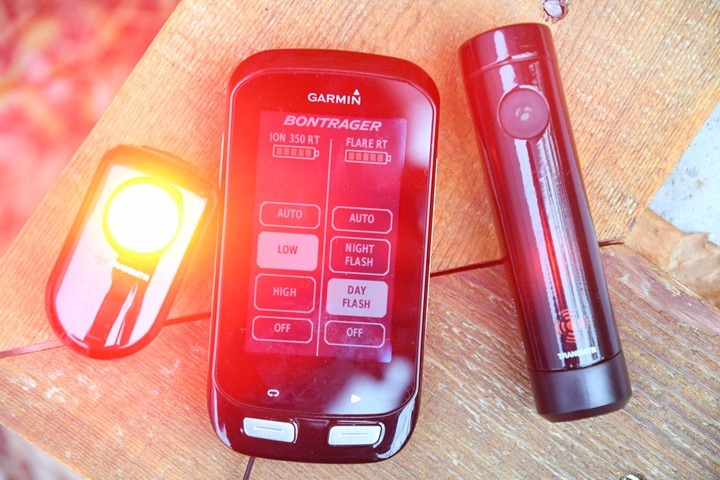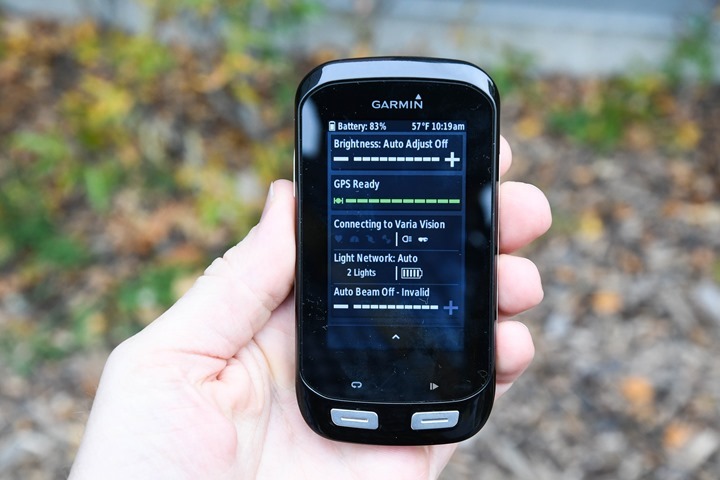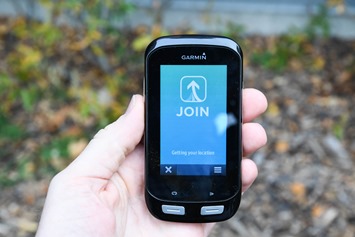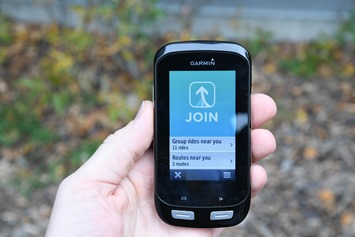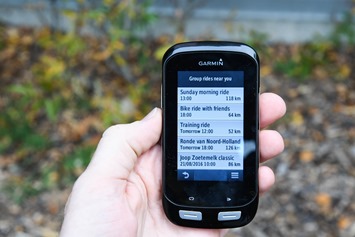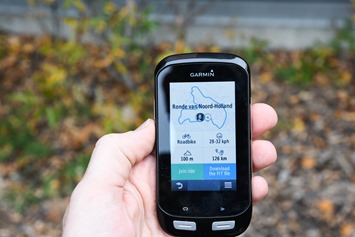Last week while at the annual ANT+ Symposium, Garmin announced a pile of new features for Connect IQ, and in the process, also lit up a bunch of partner apps and devices. I had a chance to get a run-through on all the new features, as well as see three of these new 3rd party apps and devices in person.
In addition to that, there were two other tidbits of news around both a dedicated Connect IQ book this fall, and developer conference next spring. Plus of course, some interesting metric stats on downloads/devices. Everyone loves numbers!
Oh – if you’re not a data/dev geek, the best section to skip to is probably just the 3rd party devices section. It’s got a nifty video that shows three partner apps/devices. That makes all the code-type stuff a bit more real-world.
New Functionality:
Connect IQ already saw a bit of a major update this past summer, with Connect IQ 2.0 being launched. That brought with it numerous new features, including most notably the ability for 3rd parties to record and display data directly into the .FIT files. That data is then passed on to both Garmin Connect as well as 3rd party platforms (about which I managed to hold court with not one, but two separate discussion groups while at the Symposium, including with your favorite platforms like Strava and Training Peaks…more to come there).
This addition has been a core turning point for me in actually using Connect IQ apps myself, as I think it really opens up the door to unique sensor solutions down the road. Up until this point, much of the data being shown in Connect IQ was more transient in nature. I wrote about this change in more detail back this summer here. Of note in the demo this week though was Stryd (the running power meter) pumping in more than just running power to Garmin Connect, but also their advanced running metrics as well:
So what’s new in Connect IQ 2.2? Well, three specific features. Actually, more like three and a half. They are as follows:
Generic ANT Bursting: This allows CIQ apps to burst a string of high speed messages in quick succession to devices/sensors. Typically ANT+ broadcasts upwards of four times a second, but often the same message repeated. In this case, you’re bursting at far higher message rates, to allow for transmission of longer data types quickly. The easiest example is the Nokē lock below, where they’re transmitting a long authentication key and want that transaction to be virtually instantaneous. This allows the app to burst the key (which wouldn’t otherwise fit in a single ANT message) such that the entire unlock sequence happens the instant you press unlock on your Garmin Edge.
ANTPlus Module: This new software module (it’s not a hardware thing) gives apps deeper access to the sensors that are already paired by the host device. Meaning, today if you pair on your Edge 520 ANT+ lights, the Connect IQ apps have a specific level of access. They’re allowed certain operations, but not quite all the native operations that are capable by Garmin themselves. This aims to rectify that by giving far greater access to apps to paired sensors, such as the Bontrager lights. This is different than a Connect IQ app making a specific ANT connection to a sensor. Further, it doesn’t take up any additional ANT channels on the device, since it’s leveraging the existing ones. This is being introduced initially for ANT+ Power & Lighting Control, but will expand beyond that. It’s also being introduced first on the Edge series units that support CIQ2.0.
Downloadable Content: No, you can’t download Netflix videos to your Garmin. Well, not yet anyway. However, what this allows apps to do is to download content to device memory/storage, versus downloading to app memory. The benefit of this is that not only can other apps access this content, but so too can Garmin native apps. So this allows one app to download something like a course or route, and then pass it to a different app (or even the native Garmin routing engine). You’ll see this below in the Join app example. CIQ downloadable content supports data types like Waypoints, Courses, Routes, Workouts, and Tracks. Each of those acts slightly differently depending on the device type (e.g. Edge vs handheld).
Intent: This one is the ‘half’ I spoke about earlier. Intent simply allows apps to open each other, and to pass arguments to each other. Not like a Hilary-Trump argument, but rather a set of instructions. This allows one app to tell another app what to do, such as to open a specific file, or to even open another app. So one app could be a unique warm-up/stretching app, that in turn passes to the running app.
So who’s getting what?
Well, all of these above changes come to Connect IQ 2.0 capable devices, as part of Connect IQ 2.2. As with any software platform, there will be cases where older devices won’t have the ability to run these new functions. Said differently: Some devices will get the short end of the stick.
Right now Gamin’s list of Connect IQ 2.0 capable devices are: Edge 520, Edge 820, Edge 820 Explore, Edge 1000, Edge 1000 Explore, Forerunner 735XT, Fenix Chronos, and Vivoactive HR. This explains it and the levels in more detail. Notably excluded is the Fenix3/Fenix3HR lineup.
You’ll remember two years ago when Garmin first announced Connect IQ that they announced platform capabilities before devices that could leverage those. That’s more or less the same thing here as well where there are obvious device gaps in the CIQ lineup for 2.2 going forward, but it’ll take some number of months or longer for all those gaps to fill in.
New 3rd Party Apps and Devices:
It’s without surprise that the number of 3rd party Connect IQ apps and integrated devices continues to grow. Garmin has now shipped 3 million Connect IQ capable devices, which puts their platform pretty high up the list in terms of wearable app platforms. The above is a chart of all the current Connect IQ capable devices…except the Epix unit. Because it didn’t fit in the chart (much like Epix’s life in general). That’s 21 units in total that support Connect IQ today.
Many of those thousands of apps are watch faces and other hobbyist type apps, which is great. But at the same time, Garmin continues to try and attract more and more mainstream companies to the platform. For example, GU just released an app last week (that’s the gel company). Sure, it’s a long way from having an Uber app on your Fenix3, but even having the Uber app on my Apple Watch, I almost never end up using it. Instead, pulling out my phone is my preferred method for that particular interaction.
Still, there are many cases where larger name 3rd party developers are investing in the platform, and Garmin had three on-hand at the Symposium to demo their wares. While I’ll briefly cover them in photos/text below, this video I shot gives you a quick 60-second demo of each of the three that were featured.
Looking at them outside the video, first you have Nokē. This company makes connected bike locks. Previously those were done via Bluetooth Smart to the phone. But now with their 2nd generation units coming out by the end of the year they’ll be having dual ANT+/Bluetooth Smart in them. Yet another in a growing list of companies that just gets that it’s so cheap to add in dual ANT+/BLE components, that it opens up numerous use cases versus locking customers into either platform.
This gives that Nokē the ability to interact with the Garmin devices via Connect IQ. However, in order to do that they needed some method of authentication and authorization with Connect IQ. So with CIQ2, they were able to use OATH to complete that. The Connect IQ app will work to initially authorize your specific device to open that specific lock, via a web service that Garmin Connect Mobile handles for your device. This ensures that it’s only allowed to unlock your specific lock, and not others.
Once that’s done, you can simply tap the screen on the Edge 1000 to unlock your bike lock. It takes a split-second and you’re good to go. No keys, pulling out your phone, or typing in a code. Just tap and go. The app uses the new bursting capability to send the authentication key to the lock with virtually zero delay.
The Nokē locks run $69 for the padlock version, and $129 for the u-lock version.
Next you’ve got the Bontrager smart lights. These ANT+ enabled lights have actually been out for some time, and are somewhat similar in concept to Garmin’s lights. While these lights have mostly worked with the Edge 520/820/1000 series for a while, Garmin made that a bit more official back in September by actually specifying in the release notes support for these lights. Both the Bontrager and Varia lights follow the ANT+ Lighting Control standard, making it easy to support in head units.
However, what Bontrager did here is to offer a data field that you can add on your Edge device to get quicker control over the Bontrager lights. So instead of having to dig through a menu, you can just swipe left/right to the set data page and then change brightness/lighting settings. Further, with Di2 control, you can even do that directly from the handlebars (as I showed in the video):
Finally, we’ve got the Join app, which was formerly known as CycleWE. This app allows you to find group rides as well as routes nearby your current location. What’s unique about this from a Connect IQ standpoint is that they’re using the new downloadable content and ‘intent’ functionality. The app will download routes from their platform, and then pass that .FIT file (with routing instructions) to the Edge’s native routing engine to start your ride.
Now Join is unique in that it’s a widget, so you swipe down from the upper menu to get started, and then swipe from the side to access the widgets:
You’ll notice next it’ll actually leverage the GPS on the device itself to get your location, which it then passes through your mobile phone to a web service to grab routes and rides:
From there you can pick a ride, and then immediately save the route to your Edge for routing:
Pretty cool stuff. As I noted above – all of this is within the video in a bit more detail. Of course, as you might expect, all of these apps are beta and not quite available yet. As such, none of them worked perfectly 100% of the time, but again, it’s just beta at this point. I don’t have specific release dates for any of these apps at this time.
Further, it doesn’t mean there aren’t other cool apps out there. In fact, there are tons (i.e. DWMap). These were just the three that happened to be at the Symposium and had a few spare minutes to shoot a video while I froze my ass off standing outside in shorts with the temperature at the freezing point.
Garmin Connect IQ Summit & Book:
Next up, Garmin is launching a Connect IQ book. Well, actually, technically it’s an independently written book, though Garmin is working hand in hand with the author (Brian Jepson) to ensure accuracy/etc. That book will be available from O’Reilly, and be free. Free books are the best type of books. As those in technical circles know, O’Reilly books are often supported by the company that makes the product (Garmin in this case), so that developers get free and higher quality learning content. Which is basically what’s happening here.
That book will be available in November. And again, free.
Last but not least, Garmin will be hosting a Connect IQ developer summit in Olathe, Kansas next spring at their corporate headquarters (that’s my behind the scenes post if you’d like to kill some time). The goal of this is a 2 to 2.5 day developer-focused conference with Connect IQ workshops, demonstrations, and other CIQ goodness. The target audience for this particular conference is kinda like the ANT+ Symposium in that it’s aimed more at businesses/industry than hobbyist. And unlike the book, it will not be free.
The exact dates are still being finalized, but it sounds like it’ll probably be roughly aligned around the Garmin Marathon in Olathe, Kansas. That event also has shorter-distance options as well (the running race, not the conference). I suspect if you hit up that subscription link above you’ll get the date information once it’s finalized. I’d love though to see Garmin offer 1-2 spots for hobbyist type apps that are unique and doing innovative stuff in the field (and well downloaded), such as DWMap.
—
Phew, ok. Lots of stuff packed in there!
I’ll talk a bit more about Connect IQ in my ANT+ Symposium presentation, which I hope to have posted in the next day or two (as soon as I receive the video files). I talk about some of the pros and cons of the platform, and what it means to the future of Garmin wearables. Of course, I talk about craptons more in that presentation about all sorts of stuff (actually, two presentations and a round-table). So stay tuned there!
Thanks for reading!



























